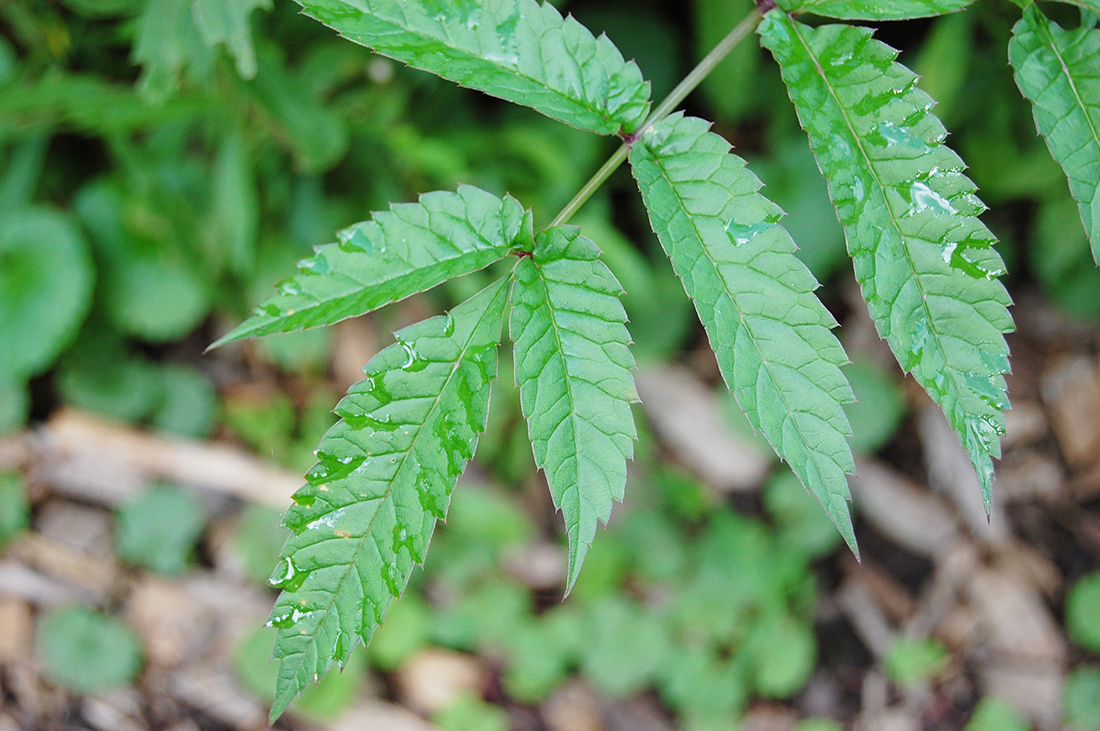Spotted Water-Hemlock
Poisonous if consumed.
- Carrot or Parsley (Apiaceae family):
- Cicuta maculata L.
- EPPO code:
- CIUMC
- Other names:
- Beaver poison, musquash-root, poison parsnip, spotted hemlock, water hemlock
Species information
- Lifecycle:
- Perennial
- Propagation:
- Reproduces by seed and rootstocks.
- Emergence:
- Seeds only germinate after immersion in water (Mulligan and Munro, 1990).
- Habitat:
- A native species that can be found throughout Ontario, spotted water hemlock is always found near water likely because of its germination requirements.
- Competitiveness:
- No data exists on the competitiveness of spotted water hemlock. Presumably, this is because the species is never found in cultivated fields.
- Toxicity:
- Spotted water hemlock is considered the most poisonous of all Ontario weeds since it contains a very potent toxin, cicutoxin, that is present in all plant parts. There have been numerous accounts of sickness and death through consumption by both humans and livestock, as reported by Mulligan and Munro (1990).
Identification clues
Leaves
- Young leaves:
- Basal leaves are twice compound with many leaflets and have sharply toothed margins.
- Mature leaves:
- Mature leaves are similar to basal leaves. The veins of the leaflets go to the notches between the teeth on the margins.
Mature plant
- Stem:
- Spotted water hemlock’s stem is erect and grows 1–2 m high. It is round or slightly angular with purplish lengthwise streaks.
- Flowers:
- Its flowering head is umbrella-shaped, compound and grows up to 12 cm in diameter. The flower is comprised of smaller umbels made of many individual flowers that are white with 4–6 petals. Spotted water hemlock flowers from June to August.
- Roots:
- Branched taproot with secondary tuberous roots.
Often mistaken for
I know it's not Cow parsnip because Cow parsnip is usually taller, thicker and “wooly” in appearance compared to spotted water-hemlock.
I know it's not Giant hogweed because Giant hogweed is a much larger plant (it can grow to be 4.5 m tall and has larger flowers) and its compound leaves are not comprised of many leaflets.




Updated: January 13, 2023
Published: January 13, 2023